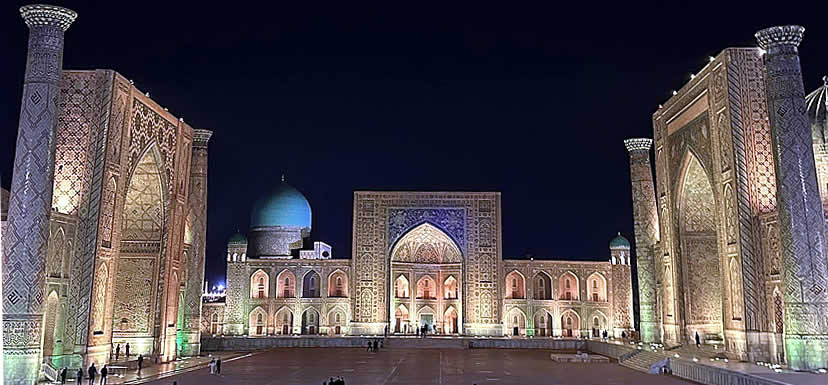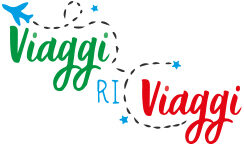Uzbekistan, officially known as the Republic of Uzbekistan (in Uzbek: Ўзбекистон Республикаси), is a country in Central Asia. Its capital is Tashkent, which has a population of over 2.3 million.

Uzbekistan is famous for being a land of legends, where its people warm hearts, and its architectural monuments and traditions, filled with gastronomic delights and folk dances, preserve an ancient cultural heritage. I recommend everyone to explore its historic cities, admire the architecture, and immerse themselves in the local culture. Additionally, Uzbekistan’s history is intertwined with great empires, making it a fascinating place for history and culture enthusiasts.
The history of Uzbekistan spans various epochs and cultures. Situated primarily between the Syr Darya (Jaxartes) and Amu Darya (Oxus) rivers, it is a country with rich and captivating historical roots. Here’s an overview of Uzbekistan’s history:
- Antiquity: In ancient times, the region largely corresponded to the area known as Sogdiana and also Bactria. The earliest recorded inhabitants in Central Asia were the Scythians, who arrived from the northern plains of present-day Uzbekistan in the first millennium BCE. When these nomads settled in the region, they built an extensive irrigation system along the rivers. The cities of Bukhara and Samarkand emerged as centers of governance and culture.
- Medieval Period: By the 5th century BCE, the states of Bactria, Sogdiana, and Tokharistan dominated the region. With the development of silk trade between China and the West, Persian cities capitalized on this opportunity and became major trading centers. Bukhara, Samarkand, and Khiva became incredibly wealthy thanks to the famous Silk Road. Transoxiana (Mawarannahr) was one of the most influential and powerful Persian provinces in antiquity. khara, Samarkand, and Khiva became extremely wealthy cities thanks to the famous Silk Road. Transoxiana (Mawarannahr) was one of the most influential and powerful Persian provinces in antiquity.
- Invasions and Dominion: The area was briefly conquered by Alexander the Great and was known as Sogdiana. Subsequently, it passed through the Seleucid Empire, the Greco-Bactrian Kingdom, the Kushan Empire, the Hephthalite Empire, and the Sasanian Empire. With the arrival of the Turkic peoples, the Sogdian states became part of the First Turkic Khaganate and the Western Turkic Khaganate.
- Hindu Dominion: Before the Islamic invasion, the region was ruled by Hindu kings for several centuries. Among all the dynasties, the Kushan dynasty was the most notable and influential. During this period, science, art, and culture flourished in both Hinduism and Buddhism, while both religions coexisted harmoniously.
What to see in Uzbekistan:
Uzbekistan, situated at the crossroads of the ancient Silk Road, is a fascinating destination for travelers. With its stunning historical architecture, beautiful mosques and madrasas, Soviet modernism, a thriving artistic and craft scene, rich traditional culture, and genuine local hospitality, Uzbekistan offers unforgettable experiences. Here are some of the top attractions to visit:

- Registan in Samarkand: This historic square impresses visitors with its dramatic architecture. Included in the UNESCO World Heritage list, the square is composed of three majestic madrasas: Ulugbek, Sherdor, and Tilla-Kori, which together served as universities for Islamic scholars. Samarkand is also famous for other attractions such as the Bibi-Khanym Mosque, the Shah-i-Zinda Necropolis, the Gur-e-Amir Mausoleum, and the Ulug Beg Observatory.
- Bukhara: This city will transport you back in time. The historic part of Bukhara, protected by UNESCO, is authentic and well-preserved. Here, you’ll find mosques, minarets, madrasas, craft workshops, caravanserais, and local restaurants. The central square, Labi Hovuz, surrounded by an artificial pool, has a unique atmosphere. Don’t miss the Ark, the former residence of the Emir of Bukhara, the madrasas of Mir-i-Arab, Nadir Divanbegi, and Abdul Aziz Khan, the Kalon Minaret, and the summer palace of Sitorai Mohi Hosa.
- Savitsky Museum in Nukus: A must-visit for art lovers. This museum houses an eclectic collection of artworks, including Russian paintings, Uzbek art, and a vast array of works by the renowned artist Igor Savitsky.
- Ichan Kala in Khiva: This ancient city feels like stepping into the past. Narrow winding streets, clay houses, and majestic walls make Ichan Kala a unique place. Explore the Tash Hauli Palace, the Juma Mosque, the Kalta Minor Minaret, and the Pakhlavan Makhmud Mausoleum.
- Rishtan: For ceramic enthusiasts, Rishtan is the right place. Here, you can visit local artisans’ workshops and admire colorful, hand-decorated ceramics. Don’t miss the opportunity to purchase a unique piece as a souvenir.
- Margilan: This city is famous for its silk. Visit the Yodgorlik Silk Factory, where you can see the silk production process and purchase exquisite fabrics. Margilan is also known for its carpets and traditional sweets.
- Tashkent: The capital of Uzbekistan offers a blend of modernity and tradition. Explore Independence Square, the Museum of Applied Arts, Chorsu Market, and the Kukeldash Complex.
- Konigil Village: This village is renowned for mulberry paper production. Visit one of the local paper mills and discover the traditional process of making paper.
Uzbekistan truly is a treasure trove of culture, history, and natural beauty
Uzbek cuisine
Uzbek cuisine is a delicious fusion of influences from different parts of the world. This Central Asian country offers dishes rich in flavor and tradition. Here are some of the traditional dishes that you should definitely try during your visit to Uzbekistan:
- Plov: Plov is widely considered the national dish of Uzbekistan.
- Shashlik: Flavored meat skewers. Lagman (soup): Lagman is a soup made with noodles, meat, vegetables and spices.
- Mantì: Manti are large ravioli filled with lamb or beef, onions and spices. They are steamed and served with tomato sauce or yogurt.
- Samsà: These are puff pastries filled with meat or potatoes, spices and onions. They are delicious and perfect as a snack or appetizer.
- Chuchvara: Similar to manti, but smaller and served with broth.
- Suzma: A creamy, thick yogurt, often served with honey or dried fruit.
- Halva: A dessert made from sesame or sunflower seeds, sugar and butter.
- Bread: Fresh bread is an essential element of the Uzbek meal. it is often cooked in traditional tandoor ovens.
So, when you’re in Uzbekistan, be sure to savor these local delicacies and immerse yourself in the culinary culture of this fascinating nation!

